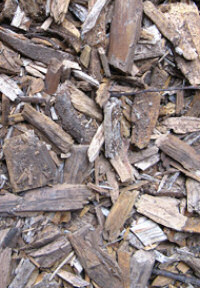31 Oct 2013
Indicators of Environmental Sustainability
| Full indicator name | Sub-indicators | Units |
|---|---|---|
| On-site energy generation (from renewables) and energy use classified by origin including the share of self-sufficiency | On-site energy generation from renewables in total and classified into a) heat b) electricity c) fuel |
terajoule (TJ) |
| Energy use in total and classified by a) heat in total classified by origin (renewable/non-renewable) b) electricity in total classified by origin (renewable/non-renewable) c) fuel in total classified by origin (renewable/non-renewable) |
terajoule (TJ) | |
| Share of self-sufficiency | % | |
| Greenhouse gas emissions and carbon stock | Greenhouse gas emissions in total | CO2 equivalents |
| Carbon stock in a) forests [classes as per IPCC guidelines] b) wood products c) landfill |
CO2 equivalents | |
| Transport volume and distance per mode of transport | Total tonnes and share of modal split | tonnes, % |
| total tonne-km and share of modal split | tonne-km, % | |
| Water use | Water use (freshwater intake by industry) | m3 |
| Water use of the forest ecosystem a) evapotranspiration from the forest ecosystem Groundwater recharge |
m3 per ha | |
| Area of forest and other wooded land and related growing stock classified by type and by availability of wood supply as well as balance of increment and fellings | Area of forest and area of other wooded land | Ha |
| Growing stock classified by: a) forest types (predominantly conifers, predominantly broadleaved, mixed) b) forest available for wood supply (as defined by UNECE/FAO) |
m3 (growing stock is measured over bark) | |
| Net increment (balance between increment and fellings) | m3 | |
| Soil condition as expressed by chemical soil properties and soil compaction | Chemical soil properties related to soil acidity and eutrophication classified by main soil types a) pH b) CEC c) C:N ratio d) organic C e) base saturation f) site nutrient budget averaged over total rotation period (N, P, K, Ca, Mg) |
a) pH classes b) cmol per kg c) ratio d) g per kg e) % (calculated as sum base cations CEC)*100 f) % difference over total rotation period |
| Soil compaction from machine operations | soil density in kg per dm3 | |
| Water pollution classified by organic substances and nutrients and non-greenhouse gas emissions into air | Water pollution a) organic substances (biochemical oxygen demand b) nutrients (N, P) c) acidity |
a) kg BOD5 b) kg c) pH classes |
| Non-greenhouse gas emissions into air (CO, NOx, SO2, NMVOC) | kg | |
| Area of forest and other wooded land (OWL) classified by number of tree species occurring and by forest type and by protection status | Area of forest and OWL classified by a) number of tree species occurring b)forest types (predominantly conifers, predominantly broadleaved, mixed) |
total number per 1000 ha |
| Total volume of deadwood on forest and OWL and classified by a) standing deadwood b) lying deadwood |
m3 per ha | |
| Protection status of area of forest and OWL | area per 1000 ha (according to MCPFE assessment guidelines) | |
| Forest area with damage and damage induced wood supply | Area with damage classified by damaging agent a) biotic - i. insects and diseases or ii. wildlife and grazing b) abiotic - i. fire; storm,wind; snow, drought, mudflow and other identifiable abiotic factors c) human induced |
ha |
| Damage-induced wood supply | m3 | |
| Generation of waste - total, hazardous, and categorised by type of waste management | Generation of waste in total, and the proportion of which is hazardous waste | kg |
| Waste management a) waste to material recycling b) waste to incineration c) waste to landfill |
m3 |

